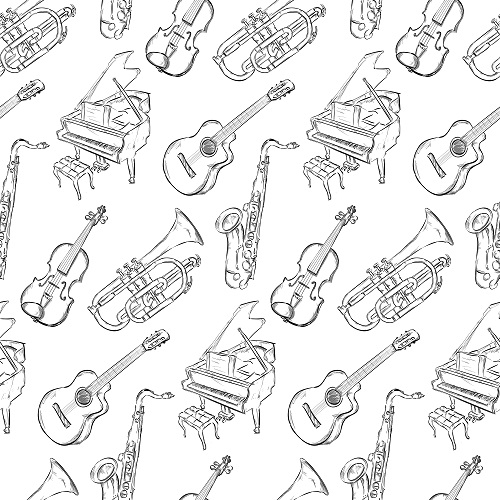Music Theory Basics
Understanding Music Theory will help you in many ways. From learning how to construct scales using intervals, to building chords and chord progressions, the applications of Music Theory are endless. Scales and keys can help us figure out melodies much more quickly. Knowing the key of a song and it’s associated scale(s), we can begin to eliminate tones that don’t fit so we can more easily find the ones that do. And once you comprehend how chords and chord progressions are put together, you can use the most common groupings of chords to learn entire songs in minutes. Plus, understanding Music Theory helps you to become a much better song writer! Understanding how to build melodies and chord progressions that work is a priceless skill to learn. So, how do we get started learning Music Theory?
Notes
Music uses 7 letters of the alphabet – A, B, C, D, E, F, and G. However, there are twelve notes in an octave! (An octave is the distance between two notes of the same name – and can also be described in physics as double the frequency. An octave retains the same character as the lower note, but in a higher register.) These other notes in between the “natural” notes can be called Sharp or Flat, depending on the key. One pitch, (which is called a Half Step) above a note is called a Sharp, while one half-step below a note is called a Flat. So a Half Step below a D is a Db, and a half step above a D is called a D#. But these notes could also be a C# and an Eb depending on the key of the song (which we’ll discuss below). At this point though, the most important rule to remember is this – every note pair has a Sharp or Flat in between them EXCEPT between B & C, and E & F.
This is very easy to see on a piano keyboard.
The white keys are your Natural notes, while the black keys are your Sharps and Flats. Notice there are no black keys between B & C, and E & F!
Now that we’ve discussed notes, let’s talk about Scales.
Scales
Typical Scales are 7 notes in a series that makes up an Octave. (In a later post I’ll discuss the scales that use 5, 6, or 8 notes.) These 7 notes use all 7 letters in the musical alphabet. That’s an important rule to remember when figuring out Scales – 7 note Scales never repeat a letter within their Octave!
The other rule for understanding Scales is the formula of Intervals used to create one. A combination of Half Steps (one pitch, as discussed above) and Whole Steps (two pitches, such as C to D or E to F#). Here’s the secret formula to create a Major Scale (the most common of all Scales):
Whole Whole Half Whole Whole Whole Half
So what does this mean? Let’s look at that keyboard again:
The C Major Scale is just the white keys on a keyboard. As you can see, the Whole Steps have a black key between them, while the Half Steps do not! Here’s another way to look at it:
C D E F G A B C
W W 1/2 W W W 1/2
So, how do we apply this to other Major Scales? Let’s take a look at the Key of G (A Key is assigned to a song to indicate which scale is used as the basis of the melody).
G A B C D E F# G
W W 1/2 W W W 1/2
You’ll notice that in order to play a Whole Step above E, you’ll have to use F# since there is no note between E & F, thus making E to F a Half Step. And it can’t be a Gb since we already have a G in the scale.
Practice!
The best way to understand Scales is to practice making them! Download the document below and give it a try, then email a copy directly to [email protected] and I’ll grade it for you!

